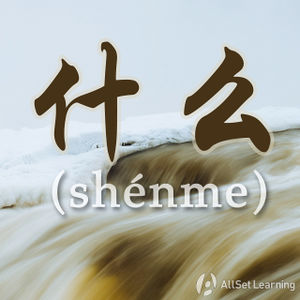Difference between revisions of "Expressing "everything" with "shenme dou""
| Line 29: | Line 29: | ||
<div class="liju"> | <div class="liju"> | ||
| − | * | + | * 你 不 应该 <em>什么</em> 话 <em>都 跟他说</em> 。<span class="trans">You shouldn't have told everything to him.</span> |
| − | *我 <em>什么</em> | + | *我 <em>什么</em> 水果 <em>都</em> 喜欢 吃。<span class="trans">I like to eat all kinds of fruits.</span> |
*今天 我 <em>什么</em> 工作 <em>都</em> 做了。<span class="trans">Today I did all my work.</span> | *今天 我 <em>什么</em> 工作 <em>都</em> 做了。<span class="trans">Today I did all my work.</span> | ||
| − | *我 <em>什么</em> <em>都</em> 知道。<span class="trans">I | + | *我 <em>什么</em> <em>都</em> 知道。<span class="trans">I knew everything.</span> |
</div> | </div> | ||
Revision as of 01:49, 26 August 2013
-
Level
-
Similar to
-
Used for
-
Keywords
"什么...都/也" (shénme...dōu/yě) is a pattern often used to express "all" or "everything". This pattern also works with other question words, such as 哪儿 and 什么时候.
Contents
Structures
The structure is very clear, as many Chinese grammar points are.
什么 + Noun. + 都
什么 + Noun. + 也
什么 + 都/也
Examples
- 你 不 应该 什么 话 都 跟他说 。You shouldn't have told everything to him.
- 我 什么 水果 都 喜欢 吃。I like to eat all kinds of fruits.
- 今天 我 什么 工作 都 做了。Today I did all my work.
- 我 什么 都 知道。I knew everything.
Negative Structures
The negative structure simply adds a 不 or a 没 after the 都/也.
什么 + Noun. + 都/也 + 不
什么 + Noun. + 都/也 + 没
Examples
- 以后 你 应该 什么 酒 都 不要 喝。From now on,you should not drink any wine.
- 我 什么 电影 都 不 喜欢 看。I don't like to watch any movie. (implying I don't like movies in general)
- 今天 我 什么 工作 都 没 做。Today I didn't do any work.
- 她 什么 话 都 没跟我说。She didn't tell me anything.
See also
Sources and further reading
Books
- Common Chinese Patterns 330 (汉语常用格式330例) (pp. 195)→buy
- Modern Mandarin Chinese Grammar: A Practical Guide (pp. 286-8) →buy
- Integrated Chinese: Level 1, Part 2 (3rd ed) (pp. 216-7) →buy
- 40 Lessons for Basic Chinese Course (基础汉语40课下册) (p. 314)→buy



